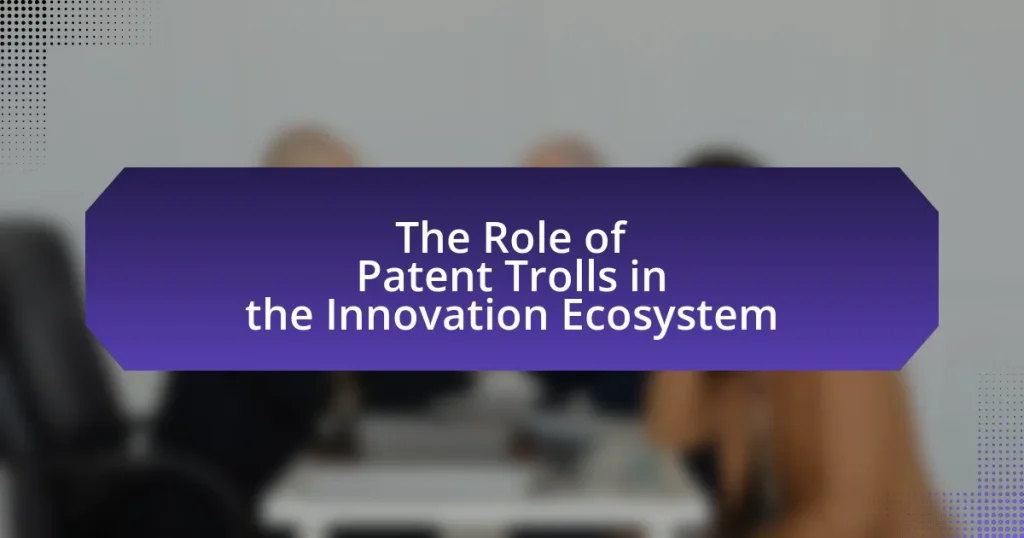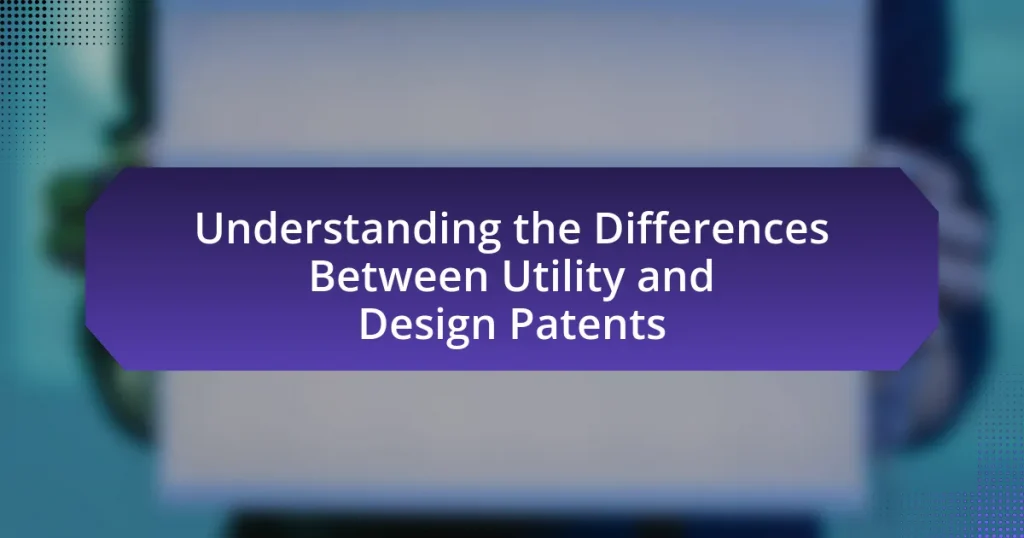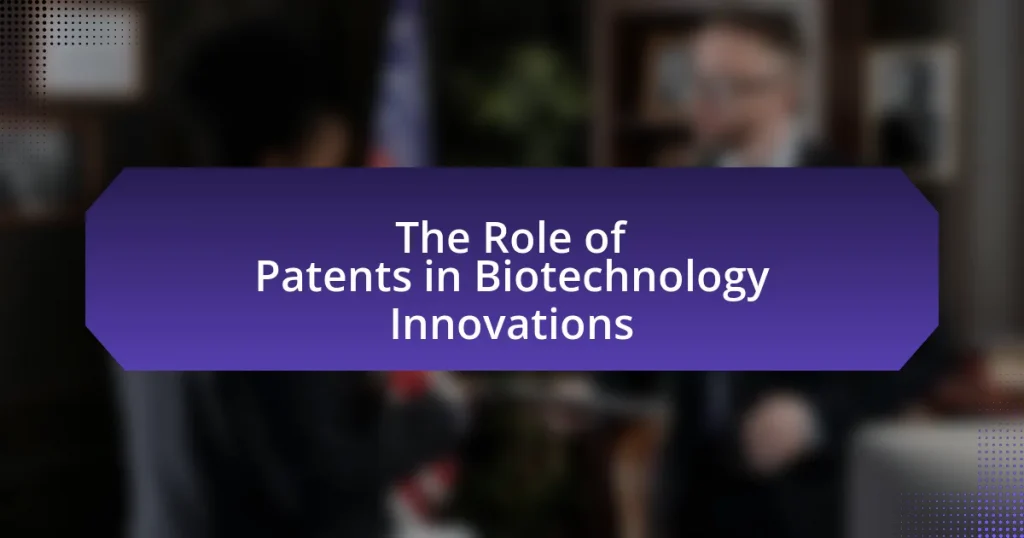Patent litigation is a complex legal process where patent holders enforce their rights against alleged infringers in court, seeking remedies such as damages or injunctions. This article provides a comprehensive overview of how to prepare for a patent litigation case, detailing the stages involved, including pre-filing investigation, discovery, and trial. It emphasizes the importance of understanding key terms, the role of legal counsel, and effective strategies for evidence gathering and case assessment. Additionally, the article addresses common challenges faced during preparation and offers best practices for successful litigation outcomes, highlighting the significance of thorough preparation and strategic planning in navigating the intricacies of patent law.
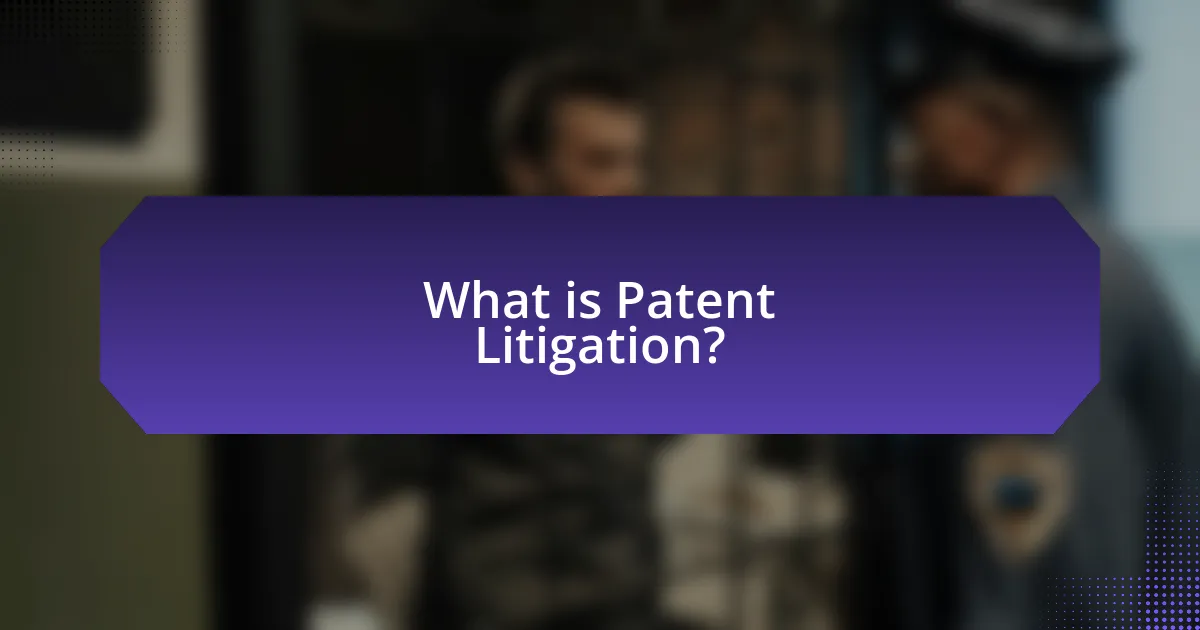
What is Patent Litigation?
Patent litigation is a legal process in which a patent holder enforces their rights against alleged infringers in a court of law. This process typically involves filing a lawsuit to seek remedies such as injunctions, damages, or royalties for unauthorized use of the patented invention. Patent litigation is governed by specific laws and regulations, including the Patent Act in the United States, which outlines the rights of patent holders and the procedures for resolving disputes. The complexity of patent litigation often requires specialized legal expertise, as it involves technical details related to the patent’s claims and the accused products or processes.
How does patent litigation differ from other types of litigation?
Patent litigation differs from other types of litigation primarily in its complexity and specialized nature, focusing on intellectual property rights. Unlike general civil litigation, patent cases often involve intricate technical details, requiring expert testimony and a deep understanding of both legal and scientific principles. For instance, the average patent case can take over two years to resolve, compared to other civil cases that may conclude more quickly. Additionally, patent litigation typically occurs in specialized courts, such as the U.S. Court of Appeals for the Federal Circuit, which exclusively handles patent appeals, further emphasizing its distinct procedural and substantive rules.
What are the key terms associated with patent litigation?
Key terms associated with patent litigation include infringement, validity, claim construction, prior art, damages, and injunction. Infringement refers to the unauthorized use of a patented invention, while validity pertains to whether a patent is legally enforceable. Claim construction involves interpreting the scope and meaning of patent claims. Prior art consists of existing knowledge or inventions that may affect a patent’s validity. Damages are the monetary compensation awarded for infringement, and an injunction is a court order to stop infringing activities. These terms are fundamental in understanding the complexities of patent litigation and are frequently referenced in legal proceedings.
Why is understanding patent litigation important for inventors?
Understanding patent litigation is crucial for inventors because it directly impacts their ability to protect their inventions and navigate potential legal disputes. Inventors who grasp the complexities of patent litigation can better safeguard their intellectual property rights, ensuring they can enforce their patents against infringement and defend against challenges to their validity. For instance, according to the United States Patent and Trademark Office, patent litigation can be costly, with average litigation costs exceeding $1 million, highlighting the financial stakes involved. By understanding the litigation process, inventors can make informed decisions about patent filing, licensing, and enforcement strategies, ultimately enhancing their chances of commercial success and innovation sustainability.
What are the stages of a patent litigation case?
The stages of a patent litigation case include the following: pre-filing investigation, filing the complaint, discovery, claim construction, trial, and post-trial motions.
During the pre-filing investigation, the patent holder assesses the validity of their claims and the potential infringement. Filing the complaint initiates the legal process, where the plaintiff formally accuses the defendant of patent infringement. The discovery phase involves both parties exchanging evidence and information relevant to the case. Claim construction is a critical stage where the court interprets the patent claims to determine their scope and meaning. The trial stage is where both parties present their arguments and evidence before a judge or jury. Finally, post-trial motions may occur, allowing either party to challenge the trial’s outcome or seek further relief.
These stages are standard in patent litigation, as outlined in legal resources such as the Federal Rules of Civil Procedure and various patent law textbooks.
What happens during the pre-litigation phase?
During the pre-litigation phase, parties engage in activities aimed at resolving disputes before formal legal proceedings begin. This phase typically involves gathering evidence, conducting investigations, and assessing the strengths and weaknesses of the case. Additionally, parties may attempt negotiation or settlement discussions to avoid litigation. According to the American Bar Association, effective pre-litigation strategies can significantly influence the outcome of a case, as they allow for a clearer understanding of the issues and potential resolutions.
How is the discovery process conducted in patent litigation?
The discovery process in patent litigation is conducted through a series of formal procedures that allow both parties to obtain evidence from each other. This process typically includes the exchange of documents, written interrogatories, and depositions, which are sworn testimonies taken outside of court. During discovery, parties may request relevant documents related to the patent, prior art, and any communications regarding the invention. Additionally, interrogatories allow parties to ask specific questions that must be answered under oath, while depositions involve questioning witnesses in person, providing an opportunity to assess their credibility and gather information. The Federal Rules of Civil Procedure govern these processes, ensuring that both parties have access to necessary information to prepare their cases effectively.
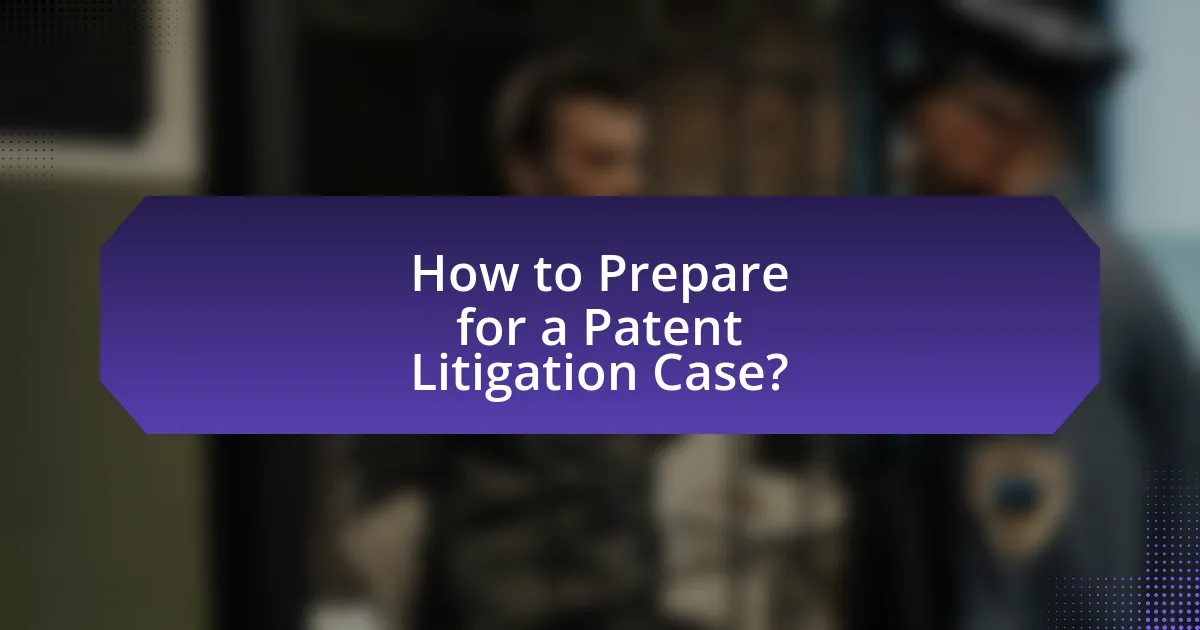
How to Prepare for a Patent Litigation Case?
To prepare for a patent litigation case, a party must conduct thorough research and gather all relevant documentation related to the patent in question. This includes reviewing the patent itself, prior art, and any related agreements or licenses. Additionally, parties should identify and interview key witnesses who can provide testimony regarding the patent’s validity and infringement. Legal counsel should be engaged to develop a comprehensive litigation strategy, which includes assessing potential defenses and counterclaims. According to the American Bar Association, effective preparation can significantly influence the outcome of patent litigation, as it allows for informed decision-making and strategic positioning throughout the legal process.
What initial steps should be taken when preparing for a patent litigation case?
The initial steps in preparing for a patent litigation case include conducting a thorough analysis of the patent in question, gathering relevant documentation, and identifying key witnesses. Analyzing the patent involves reviewing its claims, specifications, and prosecution history to understand its scope and validity. Gathering documentation includes collecting prior art, correspondence related to the patent, and any evidence of infringement. Identifying key witnesses is crucial for establishing facts and supporting the case, as their testimonies can significantly influence the outcome. These steps are essential for building a strong foundation for the litigation process.
How do you gather relevant documents and evidence?
To gather relevant documents and evidence for a patent litigation case, one must systematically identify and collect all pertinent materials related to the patent in question. This process involves reviewing patent files, prior art, correspondence, and any related litigation documents. Additionally, utilizing discovery tools such as interrogatories, requests for production, and depositions can help uncover further evidence. For instance, the Federal Rules of Civil Procedure outline specific methods for document requests that can be employed to ensure comprehensive evidence collection.
What role does legal counsel play in preparation?
Legal counsel plays a critical role in the preparation for a patent litigation case by providing expert guidance on legal strategy, compliance, and documentation. They assess the strengths and weaknesses of the case, advise on potential legal risks, and help in formulating a comprehensive litigation plan. Legal counsel also ensures that all necessary evidence is gathered and organized, which is essential for building a strong case. Their expertise in patent law and litigation procedures is vital for navigating complex legal frameworks and ensuring adherence to procedural requirements, thereby increasing the likelihood of a favorable outcome.
What strategies can be employed during preparation?
Effective strategies for preparing for a patent litigation case include conducting thorough prior art searches, developing a comprehensive litigation plan, and assembling a skilled legal team. Prior art searches help identify existing patents and publications that may impact the case, providing a clearer understanding of the patent’s validity and potential defenses. A comprehensive litigation plan outlines key milestones, timelines, and resource allocation, ensuring that all aspects of the case are strategically addressed. Assembling a skilled legal team, including patent attorneys and technical experts, enhances the ability to navigate complex legal and technical issues, increasing the likelihood of a favorable outcome. These strategies are essential for building a strong foundation for the litigation process.
How can you assess the strengths and weaknesses of your case?
To assess the strengths and weaknesses of your patent litigation case, conduct a thorough analysis of the evidence, legal precedents, and potential arguments. Begin by reviewing the patent claims and comparing them against prior art to identify any vulnerabilities. Analyze the strengths by evaluating the uniqueness of the invention, the clarity of the patent documentation, and the robustness of supporting evidence, such as expert testimonies or market data. Additionally, consider the track record of similar cases in court, which can provide insight into likely outcomes. For weaknesses, identify any gaps in evidence, potential defenses from the opposing party, and the likelihood of challenges to patent validity. This methodical approach ensures a comprehensive understanding of the case’s position, supported by factual analysis of legal standards and historical case outcomes.
What are the best practices for developing a litigation strategy?
The best practices for developing a litigation strategy include thorough case assessment, clear objective setting, and strategic resource allocation. Conducting a comprehensive analysis of the legal issues, evidence, and potential outcomes allows for informed decision-making. Establishing specific goals, such as desired settlement terms or trial outcomes, guides the litigation process effectively. Additionally, allocating resources, including time, budget, and personnel, ensures that the strategy is executable and sustainable throughout the litigation. These practices are supported by successful litigation outcomes, where strategic planning has been shown to significantly influence case results.
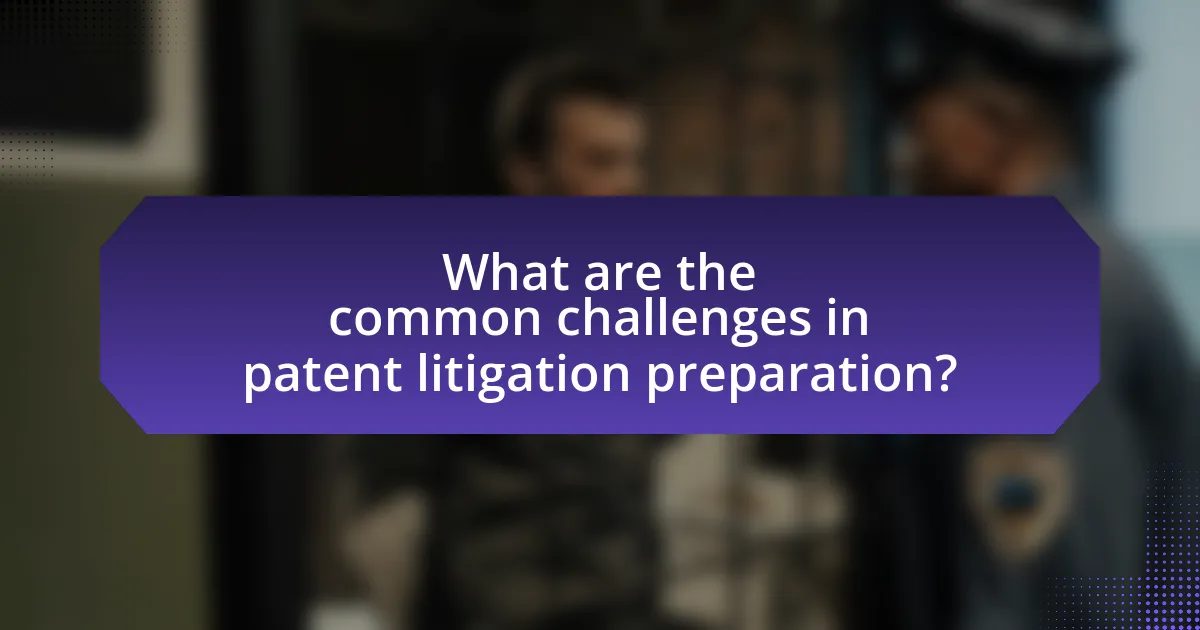
What are the common challenges in patent litigation preparation?
Common challenges in patent litigation preparation include the complexity of patent law, the need for extensive documentation, and the requirement for expert testimony. Patent law is intricate, often involving detailed technical specifications and legal nuances that can be difficult to navigate. Additionally, preparing for litigation necessitates gathering and organizing a vast amount of documentation, including prior art, patent files, and correspondence, which can be time-consuming and resource-intensive. Furthermore, securing credible expert witnesses who can effectively communicate technical aspects of the patent to the court adds another layer of difficulty, as finding individuals with the right expertise and availability can be challenging. These factors collectively complicate the preparation process for patent litigation cases.
How can you address potential challenges in evidence gathering?
To address potential challenges in evidence gathering during patent litigation, implement a systematic approach that includes early identification of relevant evidence, thorough documentation, and collaboration with experts. Early identification ensures that all pertinent materials, such as prior art and technical documents, are collected before they become inaccessible. Thorough documentation of the evidence collection process enhances credibility and allows for easier retrieval during litigation. Collaboration with experts, such as patent attorneys and technical specialists, can provide insights into the nuances of the evidence and help in interpreting complex data. These strategies are supported by the fact that successful patent litigation often hinges on the quality and comprehensiveness of the evidence presented, as highlighted in studies showing that cases with well-documented evidence have higher success rates in court.
What are the implications of incomplete documentation?
Incomplete documentation in patent litigation can lead to significant legal and financial repercussions. Specifically, it may result in the inability to substantiate claims, which can weaken a party’s position in court. For instance, lacking essential evidence can lead to unfavorable rulings or the dismissal of a case, as courts rely heavily on documented proof to assess the validity of claims. Furthermore, incomplete documentation can hinder the ability to negotiate settlements effectively, as parties may lack the necessary information to support their arguments. This situation can ultimately lead to increased litigation costs and prolonged legal battles, as parties may need to invest additional resources to gather missing information or rectify documentation gaps.
How do you handle opposing counsel’s tactics?
To handle opposing counsel’s tactics effectively, maintain a strategic approach that includes thorough preparation and adaptability. Preparation involves analyzing the opposing counsel’s previous cases and tactics, which allows for anticipating their moves. Adaptability is crucial; remain flexible in your strategy to counter unexpected tactics. For instance, if opposing counsel employs aggressive questioning, respond with calm, fact-based answers to maintain control of the narrative. This method is supported by the fact that successful litigators often emphasize the importance of preparation and adaptability in high-stakes cases, as highlighted in legal studies and practitioner guides.
What resources are available for effective preparation?
Effective preparation for a patent litigation case can be supported by various resources, including legal databases, expert consultations, and case law repositories. Legal databases such as Westlaw and LexisNexis provide comprehensive access to statutes, regulations, and case law relevant to patent litigation. Expert consultations with patent attorneys or technical experts can offer insights into complex patent issues and strategies. Additionally, resources like the United States Patent and Trademark Office (USPTO) website provide guidelines and information on patent laws and procedures, which are crucial for understanding the litigation landscape. These resources collectively enhance the preparation process by ensuring access to accurate information and expert knowledge.
How can legal databases assist in preparation?
Legal databases assist in preparation for patent litigation by providing access to comprehensive legal research, case law, and relevant statutes. These databases enable legal professionals to quickly locate precedents and analyze similar cases, which is crucial for developing effective legal strategies. For instance, databases like Westlaw and LexisNexis contain extensive archives of court decisions and legal opinions that can inform arguments and highlight potential weaknesses in opposing cases. Additionally, legal databases often include tools for tracking litigation trends and outcomes, allowing attorneys to make data-driven decisions in their preparation process.
What role do expert witnesses play in patent litigation cases?
Expert witnesses play a critical role in patent litigation cases by providing specialized knowledge and opinions that assist the court in understanding complex technical issues. Their expertise helps clarify the validity of patent claims, infringement allegations, and the overall technical context of the case. For instance, expert witnesses can analyze prior art, assess the functionality of the patented invention, and evaluate whether the accused product infringes on the patent. Their testimony can significantly influence the outcome of the case, as courts often rely on their insights to make informed decisions.
What are the best practices for a successful patent litigation case?
The best practices for a successful patent litigation case include thorough preparation, strategic planning, and effective communication. Thorough preparation involves conducting a comprehensive analysis of the patent in question, including its claims, prior art, and potential defenses. Strategic planning requires developing a clear litigation strategy that outlines objectives, timelines, and resource allocation. Effective communication among legal teams, clients, and expert witnesses is crucial to ensure alignment and clarity throughout the litigation process. These practices are supported by case studies showing that well-prepared litigants often achieve favorable outcomes, as evidenced by the increased success rates in patent cases where extensive pre-litigation analysis was conducted.
How can you ensure effective communication with your legal team?
To ensure effective communication with your legal team, establish clear channels of communication and set regular check-ins. Clear channels, such as dedicated email threads or project management tools, facilitate organized discussions and document sharing. Regular check-ins, whether weekly meetings or status updates, help track progress and address any concerns promptly. Research indicates that teams with structured communication protocols experience a 25% increase in project efficiency, highlighting the importance of these practices in legal contexts.
What tips can help in managing timelines and deadlines?
To effectively manage timelines and deadlines in patent litigation, prioritize tasks by creating a detailed project timeline that outlines all critical milestones and deadlines. This approach ensures that all parties involved are aware of their responsibilities and the timeframes required for each phase of the litigation process. Research indicates that structured timelines can enhance efficiency and reduce the risk of missed deadlines, which is crucial in legal contexts where timing can significantly impact case outcomes. Additionally, regularly reviewing and adjusting the timeline based on progress and unforeseen developments helps maintain alignment with litigation goals.

